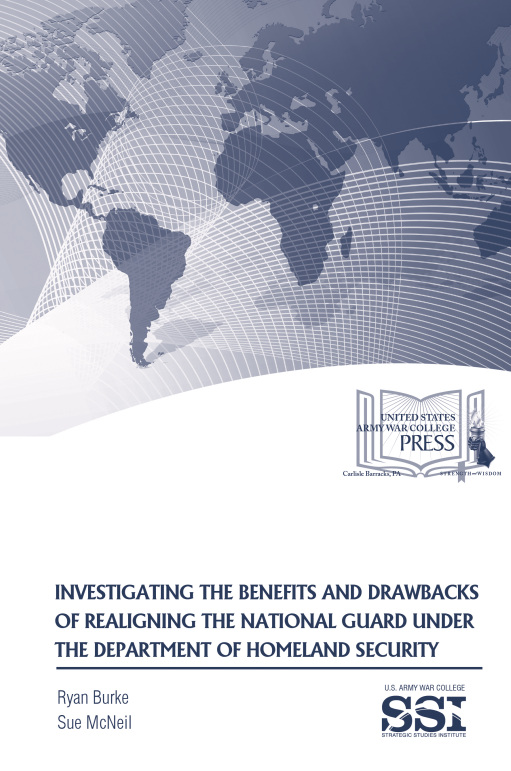 Author: Dr Ryan Burke, Dr Sue McNeil
Author: Dr Ryan Burke, Dr Sue McNeil
View the Executive Summary
Part I of the 2014-2015 Army War College’s Key Strategic Issues List (KSIL)—Army Priorities for Strategic Analysis—asks: “Given the growing importance of homeland defense, what would be the benefits and drawbacks of realigning the [National] Guard under the department of Homeland Security to enhance domestic security and disaster response, while retaining utility for overseas missions in support of the Department of Defense?” (pg. 10). This monograph details our efforts to research and evaluate the perceived benefits and drawbacks of realigning the National Guard under the Department of Homeland Security (DHS). We begin with a brief review of the relevant literature shaping the current policy and doctrinal approach to military civil support (CS) operations, including a summary of laws and strategic guidance relevant to the discussion. We then note the important distinctions between homeland security (HS) and homeland defense (HD) and the military role in each context. The seam between HS and HD provides a conceptual basis for discussing the roles and responsibilities of the National Guard, the DHS, and the Department of Defense (DoD) within domestic security and disaster response operations. After evaluating the National Guard’s role in each of the above contexts, we briefly discuss the realignment of the United States Coast Guard (USCG) within the DHS as a proxy for comparison of a similar realignment of a military-style entity under the DHS. The study concludes by listing and discussing the potential benefits and drawbacks of a National Guard realignment under the DHS and then makes five short recommendations in summary of the research effort.